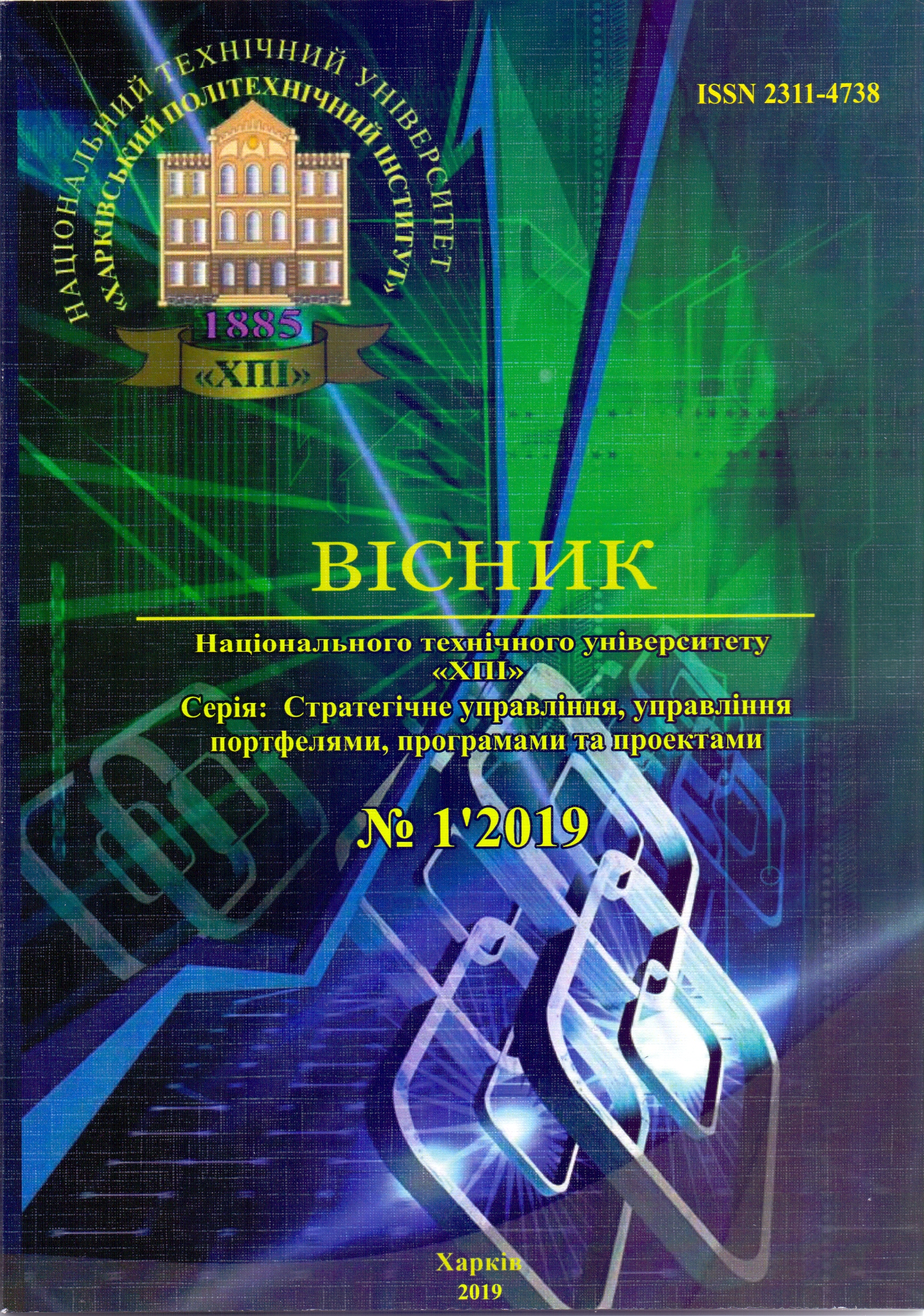DEVELOPMENT OF A WEB APPLICATION FOR SOLVING THE PROBLEM OF PROJECT MANAGEMENT METHODOLOGY SELECTION WITH FUZZY INPUT DATA
DOI:
https://doi.org/10.20998/2413-3000.2019.1326.2Keywords:
statistical data, processing, class, classification, opinion poll, algorithmAbstract
The analysis of the latest research and publications devoted to the problem of choosing a management methodology for a particular project and studying the influence of the applied methodology on the project's success has been carried out. On the basis of the analysis performed, the necessity of automatization of the methodology selection problem’s solution is established. The method for choosing a project management methodology based on fuzzy concepts was used as an approach for solving the problem. The method uses a questionnaire with questions regarding the number of people involved in the project, the customer’s working experience with the team, the assessment of the project team’s competence by the project manager, project reporting, and the likelihood of risk events. For each situation specified in the questionnaire, with the help of the survey of experts, the membership functions of all considered project management methodologies are defined, i.e. their applicability to a specific situation. In accordance with the answers to the questions of the project questionnaire, the membership functions of the project evaluation for each of its parameters are formed. For all considered methodologies, their total weighted distances from the evaluation of the project by the questionnaire are calculated using Hamming and Euclidean distances. The approach, for which the calculated distances are minimal, is chosen. A web application PMGuide has been developed to solve the problem of choosing a project management methodology with fuzzy input data. This web application is used to select a project management methodology for developing PTCQR Optimization software to optimize the scope of the project. Based on the results of calculating, the
Euclidean and Hamming distances from this project to each of the seven alternatives (PMBOK, PRINCE2, ISO21500, SWEBOK, SCRUM, XP, and
KANBAN), the flexible SCRUM methodology was chosen as the best alternative for the conditions of the considered project. The test case confirmed the correctness of PMGuide web application for choosing the project management methodology.
References
Kononenko I. V., Agai A., Lutsenko S. Yu. Primeneniye metoda sinteza metodologii upravleniya proyektom pri nechetkikh iskhodnykh dannykh [Application of the project management methodology synthesis method with fuzzy input data]. Vostochno-Yevropeyskiy zhurnal peredovykh tekhnologiy [Eastern-European Journal of Enterprise Technologies]. 2016, no. 2 (3), pp. 32–39.
Joslin R., Müller R. Relationships between a project management methodology and project success in different project governance contexts. International Journal of Project Management. 2015, no. 33 (6), pp. 1377–1392. DOI: 10.1016/j.ijproman.2015.03.005.
Joslin R., Müller R. The impact of project methodologies on project success in different project environments. International Journal of Managing Projects in Business. 2016, no. 9 (2), pp. 364–388. DOI: 10.1108/IJMPB-03-2015-0025.
Kryvinska N. Building Consistent Formal Specification for the Service Enterprise Agility Foundation. Journal of Service Science Research. 2012, no. 4 (2), pp. 235–269. doi:10.1007/s12927-012-0010-5.
Markopoulos E., Panayiotopoulos J.-C. A project management methodology selection approach based on practical project and organizational constraints. WSEAS Transactions on Computers. 2005, no. 4(8), pp. 934–942.
Kononenko I. V., Agai A. Imitatsionnaya model' osushchestvleniya proyekta [Simulation model of project implementation]. Elektricheskiye i komp'yuternyye sistemy [Electric and computer systems]. 2016, no. 23 (99), pp. 162–167.
Kononenko I. V., Kharaziy A. Resheniye zadachi vybora metodologii upravleniya proyektom na osnove optimizatsii soderzhaniya proyekta [Solution of the Problem of Choosing a Project Management Methodology Based on Optimization of the Project Scope]. Vostochno-Yevropeyskiy zhurnal peredovykh
tekhnologiy [Eastern-European Journal of Enterprise Technologies]. 2015, no. 4/3 (76), pp. 43–52.
Project Management Institute. Agile Practice Guide. Newtown Square, PA: Project Management Institute, 2017.
Rehman A., Hussain R. Software project management methodologies/frameworks dynamics “A comparative approach”. Proceedings of International Conference on Information and Emerging Technologies (ICIET). Karachi, Pakistan. 2007 pp. 1–5.
Sharon I., Soares M. D. S., Barjis J., Berg J. V. D., Vrancken J. A Decision Framework for Selecting a Suitable Software Development Process. Proceedings of the 12th International Conference on Enterprise Information System. Portugal: Springer, 2010, pp. 34-43.
Boehm B., Turner R. Balancing agility and discipline: evaluating and integrating agile and plan-driven methods. Proceedings. 26th International Conference on Software Engineering. 2004. DOI: 10.1109/ICSE.2004.1317503.
Boehm B., Turner R. Balancing Agility and Discipline. Addison-Wesley, 2004. ISBN 0-321-18612-5.
Kononenko I. V., Lutsenko S. Yu. Method for selection of project management approach based on fuzzy concepts. Bulletin of NTU “KhPI”. Series: Strategic management, portfolio, program and project management. 2017, no. 2(1224), pp. 8–17. DOI:10.20998/2413-3000.2017.1224.
Downloads
Published
Issue
Section
License
Copyright (c) 2019 Игорь Владимирович Кононенко, Светлана Юрьевна Луценко

This work is licensed under a Creative Commons Attribution-NonCommercial-ShareAlike 4.0 International License.
Our journal abides by the Creative Commons copyright rights and permissions for open access journals.
Authors who publish with this journal agree to the following terms:
Authors hold the copyright without restrictions and grant the journal right of first publication with the work simultaneously licensed under a Creative Commons Attribution-NonCommercial-ShareAlike 4.0 International License (CC BY-NC-SA 4.0) that allows others to share the work with an acknowledgement of the work's authorship and initial publication in this journal.
Authors are able to enter into separate, additional contractual arrangements for the non-commercial and non-exclusive distribution of the journal's published version of the work (e.g., post it to an institutional repository or publish it in a book), with an acknowledgement of its initial publication in this journal.
Authors are permitted and encouraged to post their published work online (e.g., in institutional repositories or on their website) as it can lead to productive exchanges, as well as earlier and greater citation of published work.

